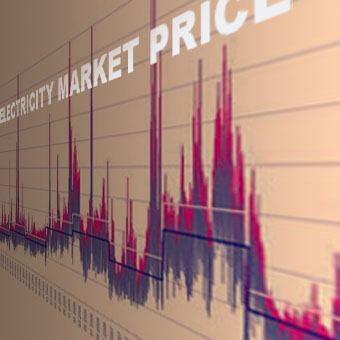We continuously develop our awareness and yours.
From a user perspective, electricity is the most attractive energy. Once the infrastructure is installed it can be used like tap water, which is available whenever we need it. Electricity offers two major additional benefits. The network can be used for electronic communication over the power lines and you can add and benefit from your own source of energy to use, to store or to sell. Unfortunately, like tap water, your electricity may not be "pure" with disastrous consequences on your processes, equipment and thus your cost of doing business. We follow the three major trends which influence the optimal usage of electricity now and in the future.

The rapid evolution of electrical networks

The growth of energy savings equipment

The electricity market opening
The Rapid evolution of electrical networks
Till the nineties, the electricity network was a one direction stream over long distances from major energy generators producing power at high voltage (let us say 400kV) to consumers loads at low voltage (400V) or medium voltage (11kV). The consumption is in nature variable but forecast usage of main users and statistical analysis of small users enabled operators to support the needs with a good quality of electricity. The growth of applications and the introduction of renewable energy has changed the game. More electricity is produced locally (regionally) to be consumed locally, requiring networks to be "bidirectional". Unfortunately, the source is in nature intermittent. Consumers become prosumers and we introduce loads such as electrical vehicles. Those continuous and sudden variations introduce major challenges for operators to maintain voltage within the limits. Many equipment will be operating above the nominal and that will accelerate their ageing and thus reduce their lifetime. On the other side, lowering the nominal voltage increases the influence of voltage dips with as a possible consequence the shut-down of control equipment. Top
The growth of energy savings equipment
Electronic ballasts, variable frequency drives, rectifiers and power supplies are power electronics equipment based on the principle to rectify the energy coming from the mains by letting the mains current to flow only during a limited portion of a cycle. It results in non-linear currents which have a negative impact on your equipment and processes. For equipment using less than 16A input current, the manufacturers are requested to comply to the European norm EN 61000-3-2 and in many cases (not all) it does not require more attention. The standard EN 61000-3-12 describes limits for equipment using an input current from 16A to 75A, but in such case the limits depend on the actual application. Above 75A, nothing is required but to comply with a limited injection of non-linear voltage in the public grid. Unfortunately, most equipment suppliers are not able or willing to inform you about the impact of their equipment on your other applications.Top
The opening of the electricity market
In recent years, we all have seen the opportunity to buy electricity from multiple suppliers. Heavy industrial consumers, directly connected to the high voltage network (also called transmission network}, already enjoy a great flexibility of the tariffs depending on the time of the day and the time of the year. Further they can also accept to reduce the power consumption during a certain amount of time and sell their capacity to others. The European Union has requested every member state to extent such opportunities to all consumers, starting of course with the industrial companies connected to the medium voltage network. While the opportunities are under discussion and not effective yet in most European regions, enterprises should prepare themselves by having a good understanding of their load profile over time. It will help them to immediately reduce their bills through a better control of the power demand and understand when and where they will be able to adapt their processes to use the electricity at the best tariff or sell their capacity. Top






